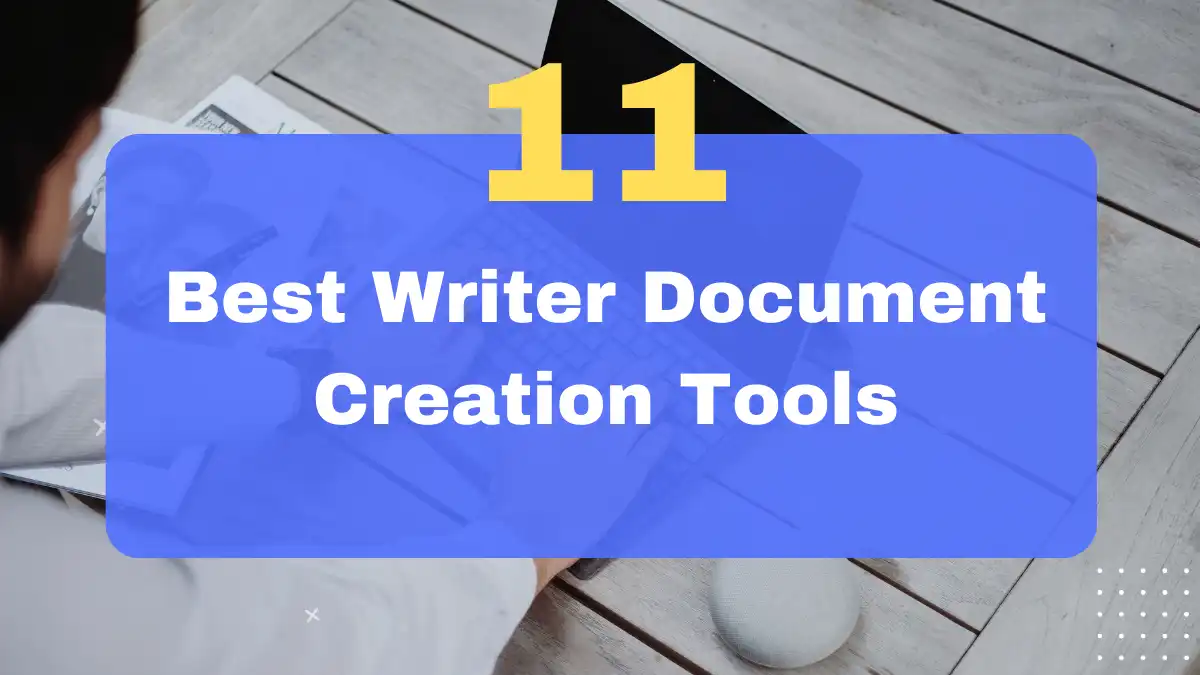
Introduction: Empowering Writers and Authors with the Right Document Creation Software
Picture this: you’ve finally carved out time to write, coffee in hand, ideas bubbling in your mind—but instead of flowing words, you’re fighting with clunky software that keeps crashing or doesn’t have the features you need. Frustrating, right? As a writer in 2025, having the right document creation tools isn’t just a luxury—it’s essential to transforming your creative vision into reality.
Whether you’re drafting your debut novel, collaborating on a screenplay, or crafting professional content, the digital landscape offers more specialized writing solutions than ever before. The challenge isn’t finding software—it’s finding the right software that aligns with your unique writing process.
The Evolving Toolkit for Modern Writers and Authors
The writing software landscape has evolved dramatically in recent years. What started as basic word processors has transformed into sophisticated ecosystems designed specifically for different types of writing projects. In 2025, writer document creation tools have integrated AI assistance, cloud collaboration, and specialized features for different genres—from screenwriting to novel planning.
Today’s tools go beyond just putting words on a page. They help organize research, structure narratives, collaborate with others, and streamline the path from first draft to publication. The right software can become an extension of your creative process rather than an obstacle to overcome.
Why Invest in Specialized Writer Document Creation Tools? Key Advantages
You might wonder: “Can’t I just use a basic word processor?” While traditional programs like Microsoft Word have their place, specialized writing software offers distinct advantages:
- Tailored workflow support: Tools designed for specific writing formats (screenplays, novels, academic papers) automatically handle formatting so you can focus on content
- Organization at scale: Manage complex projects with character databases, research repositories, and non-linear writing capabilities
- Distraction-free environments: Minimize the urge to constantly edit by offering focused writing modes
- Progress tracking: Monitor word count goals, writing streaks, and project milestones
- Specialized exporting: Generate submission-ready manuscripts or ebook formats with a single click
The right tool doesn’t just make writing easier—it can transform your entire process and output quality.
Understanding User Search Intent: What Authors and Writers Need in Best Writing Software
When searching for writing software, different writers have different priorities. Some seek distraction-free simplicity, while others need robust organization features for complex narratives. Understanding your specific needs is crucial:
- Novelists often prioritize character development tools, chapter organization, and manuscript formatting
- Screenwriters require industry-standard script formatting and scene management
- Academic writers need citation management and research integration
- Collaborative writers value real-time editing and commenting features
- Mobile writers prioritize cross-device synchronization and offline capabilities
The perfect writing software for someone else might be completely wrong for you. Your writing style, project complexity, budget, and technical preferences all matter in finding your ideal match.
Essential Features for Document Creation Tools Tailored for Writers
Core Features for Effective Document Creation for Writers
When evaluating document creation tools, certain foundational features separate writing-focused software from general word processors:
- Intuitive text editor with basic formatting capabilities
- Autosave functionality to prevent heartbreaking data loss
- Customizable interface to match your preferred writing environment
- Exporting options for various file formats (DOCX, PDF, ePub)
- Reliable search and replace for manuscript-wide revisions
- Word count tools with goal setting capabilities
- Cross-platform compatibility for seamless transitions between devices
- Version history to track changes and revert when needed
These baseline features ensure your writing process remains uninterrupted by technical limitations. They form the foundation upon which more specialized tools build their unique value propositions.
Advanced Features in Best Writing Software for Authors
Beyond the basics, 2025’s top writing software offers sophisticated capabilities that can elevate your writing process:
| Feature Category | Examples | Benefits for Writers |
|---|---|---|
| Narrative Organization | Chapter management, storyboarding, timeline views | Visualize complex narratives and maintain structural coherence |
| Research Integration | Note-taking, web clipping, image storage | Keep reference materials organized alongside your manuscript |
| Character Development | Character sheets, relationship diagrams, trait tracking | Maintain consistency across lengthy works |
| Focus Enhancement | Distraction-free mode, dark themes, typewriter scrolling | Maintain flow state during creative sessions |
| AI Assistance | Grammar checking, style suggestions, plot development (2025’s AI is more nuanced) | Get instant feedback without human readers |
| Collaboration Tools | Comments, tracked changes, simultaneous editing | Work effectively with editors and co-authors |
| Publishing Preparation | Formatting templates, book compiling, e-reader previews | Streamline the path from draft to publication |
The most powerful writing software in 2025 combines these advanced features with intuitive interfaces that don’t require technical expertise to navigate.
Top Document Creation Software for Writers & Authors: Detailed Reviews
1. Best Overall Document Creation Software for Authors (Feature-Rich): Scrivener 4.0
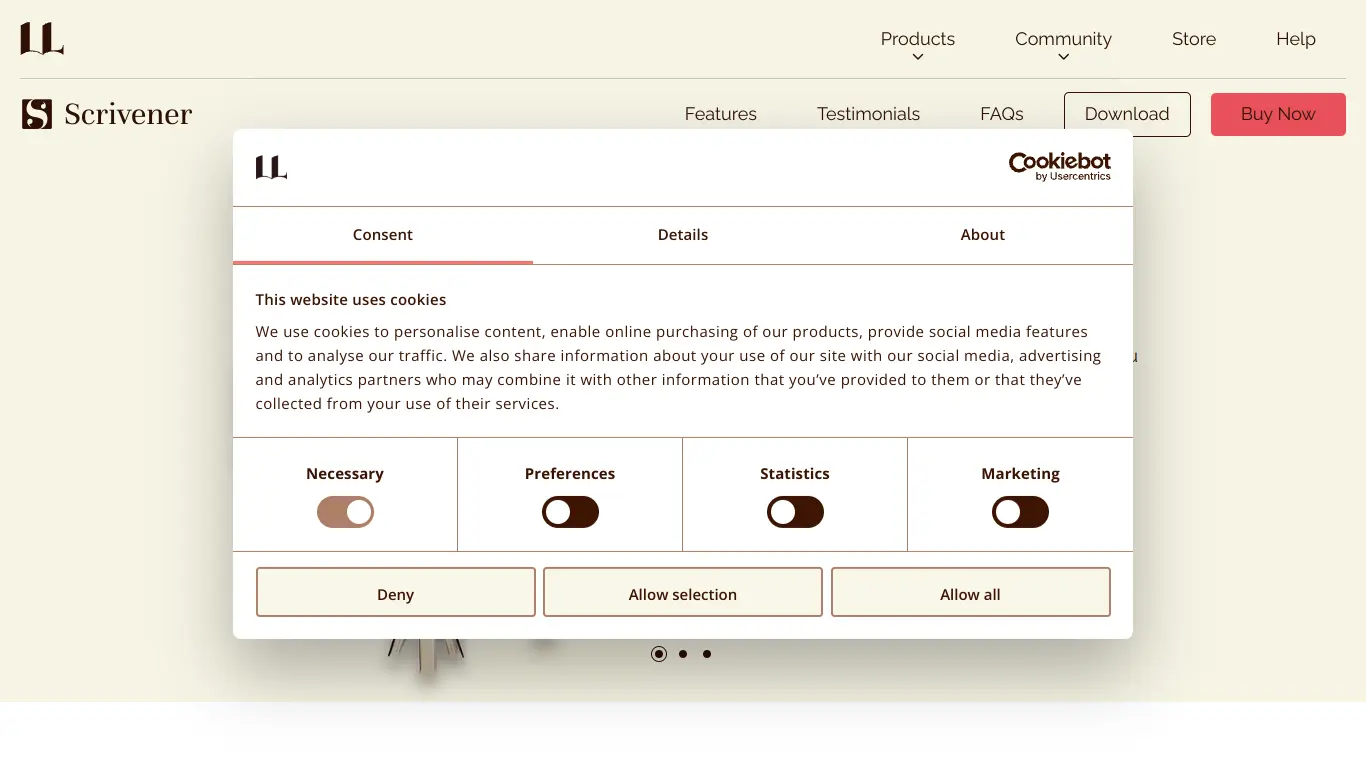
Scrivener has long been the gold standard for serious writers, and the 2025 version reinforces its dominance with significant upgrades. This powerhouse writing environment combines organizational tools with flexible writing spaces.
Key Features for Authors:
- Corkboard view for rearranging scenes and chapters visually
- Research folder for storing reference materials within your project
- Character and setting sheets with customizable templates
- Advanced compile options for various output formats
- Expanded AI integration for style analysis and consistency checking (new in 4.0)
- Enhanced cloud synchronization across all devices
Pros:
- Unmatched organization capabilities for lengthy, complex projects
- Highly customizable to fit various writing workflows
- One-time purchase model (not subscription-based)
- Robust community support and extensive tutorials
Cons:
- Steeper learning curve than simpler alternatives
- Interface can initially feel overwhelming
- More expensive upfront investment ($59.99 for lifetime license)
Ideal For: Novelists, academic writers, and anyone working on complex, lengthy projects who values comprehensive organization features and isn’t intimidated by a learning curve.
Pricing & Platform Availability:
- $59.99 one-time purchase (occasional 20% discount for NaNoWriMo participants)
- Windows, macOS, iOS, Android
- 30-day free trial (based on actual usage days)
2. Best Document Creation Software for Distraction-Free Writing: iA Writer Pro
When focus is your priority, iA Writer Pro delivers a beautifully minimalist experience that helps words flow without distractions. The 2025 version maintains its clean aesthetics while adding subtle enhancements.
Key Features for Focused Writing:
- Absolutely minimal interface that fades away as you write
- Focus Mode highlights one sentence or paragraph at a time
- Native Markdown support with instant preview
- Syntax highlighting identifies adjectives, nouns, adverbs, and conjunctions
- Content blocks for referencing other documents within your text
- Enhanced night mode with eye comfort optimization
Pros:
- Extraordinarily clean, beautiful interface
- Fast performance even with large documents
- Thoughtful typography and spacing that makes writing pleasant
- Excellent keyboard shortcut support
Cons:
- Limited organizational features for complex projects
- Fewer formatting options than full-featured alternatives
- No built-in character or plot development tools
Ideal For: Bloggers, essayists, poets, and writers who prize distraction-free environments and clean design above extensive features.
Pricing & Platform Availability:
- $49.99 one-time purchase
- macOS, iOS, Windows, Android
- 14-day free trial
3. Best Cloud-Based Document Creation Software for Writers (Collaboration): Google Docs Premium
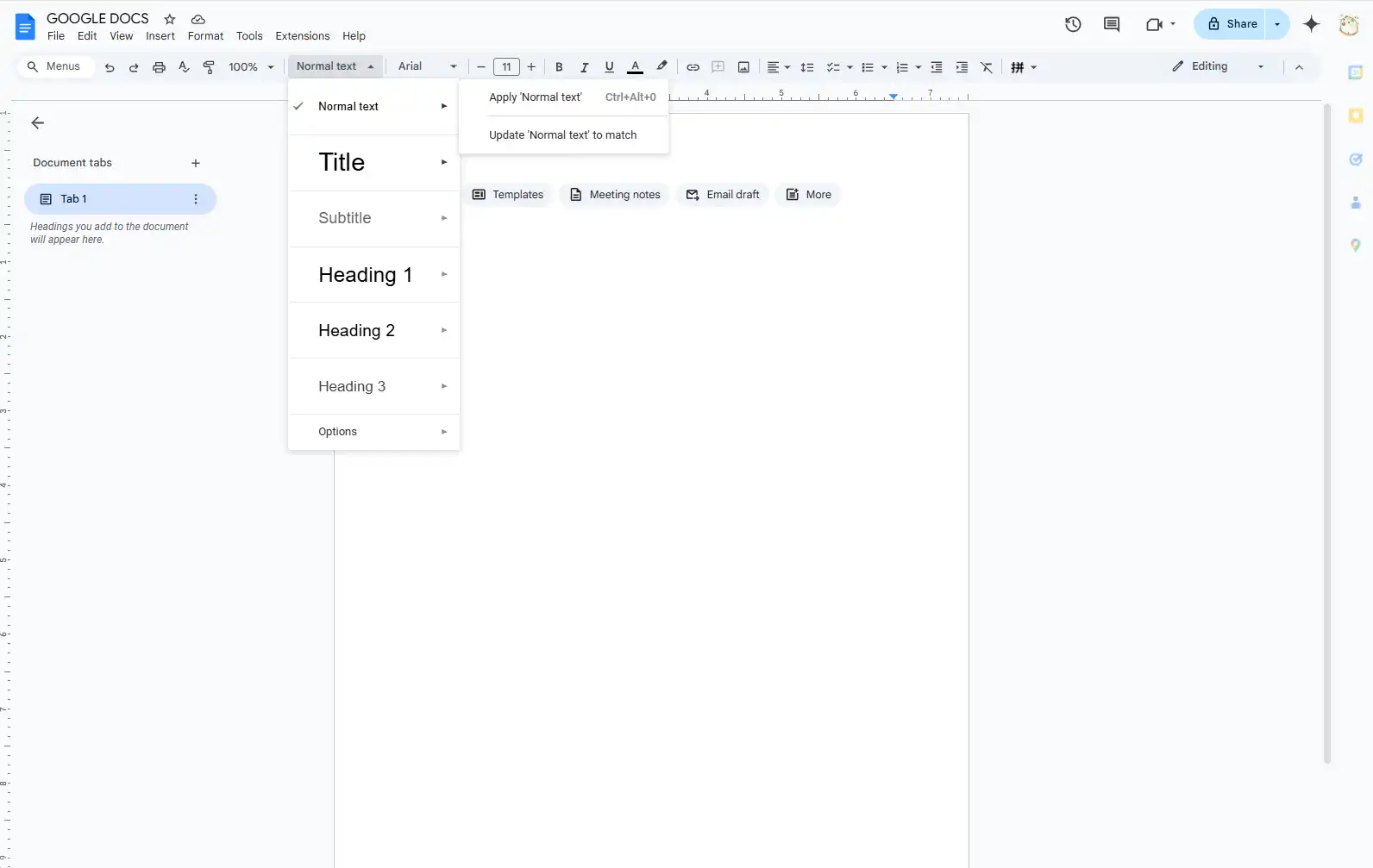
The 2025 version of Google Docs introduces a Premium tier with writer-specific features while maintaining its supremacy in collaboration. For teams of writers or those requiring maximum accessibility, it’s unmatched.
Key Features for Cloud Writing & Collaboration:
- Real-time collaboration with multiple users
- Robust commenting and suggestion systems
- Version history with named versions and comparison view
- Offline access with automatic syncing when reconnected
- AI-powered writing assistant with tone and clarity suggestions (Premium)
- New template gallery specifically for creative writing projects (Premium)
Pros:
- Unmatched accessibility from any device with a browser
- Best-in-class collaboration features
- Automatic saving and backup
- Familiar interface requiring minimal learning
- Generous free tier for basic usage
Cons:
- Limited specialized writing tools compared to dedicated software
- Requires internet connection for full functionality
- Privacy concerns for some users (data stored on Google servers)
- Premium features require subscription
Ideal For: Collaborative writing teams, educators working with students, writers who frequently switch devices, and those who value accessibility and simplicity.
Pricing & Platform Availability:
- Free tier with core features
- Premium: $9.99/month with enhanced writing tools
- Available on any platform with a web browser
- Native apps for iOS, Android
4. Best Document Creation Software for Screenwriters & Scriptwriters: Final Draft 13
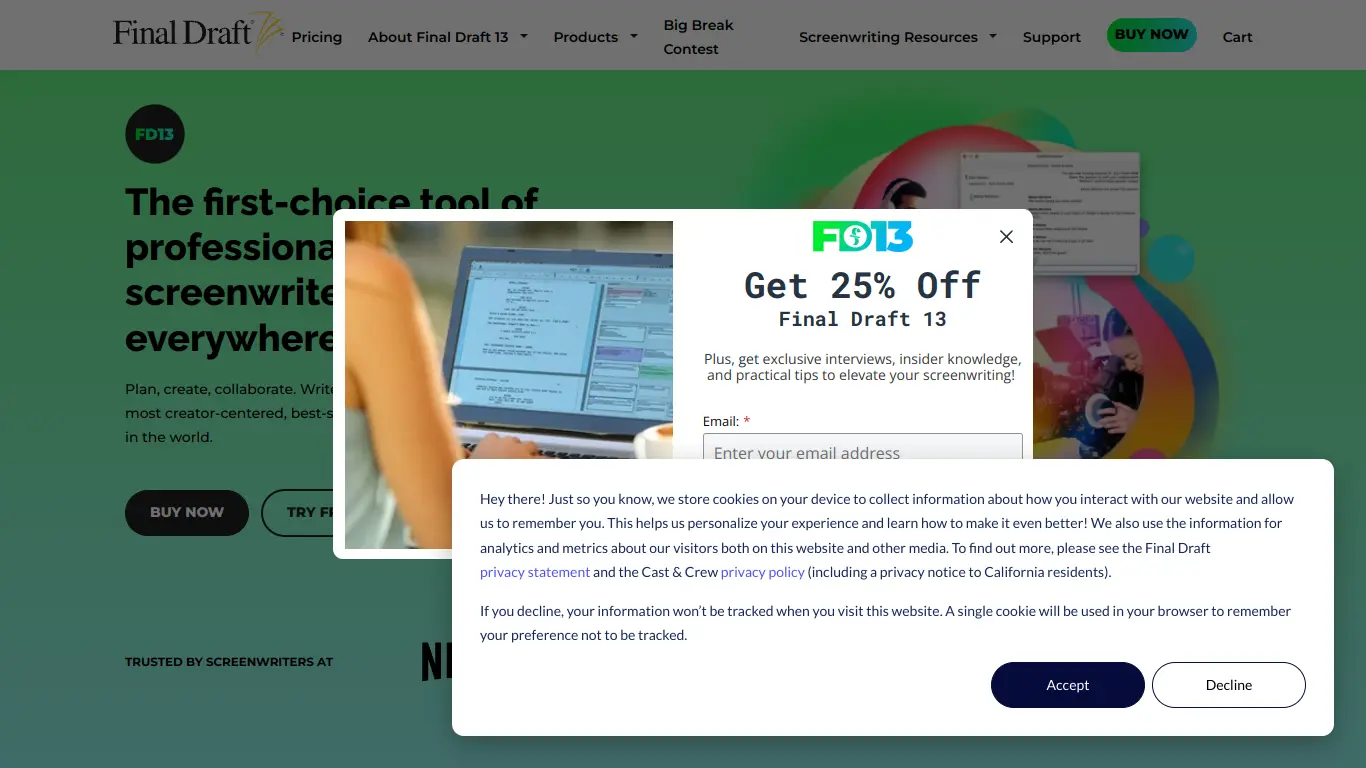
Final Draft maintains its position as the industry standard for screenwriting in 2025, with version 13 introducing AI-assisted dialogue analysis and enhanced collaboration tools.
Key Features for Scriptwriting:
- Industry-standard formatting for film, TV, and theater scripts
- Beat Board for planning scenes and storylines visually
- Story Map for visualizing your script’s structure
- Character Navigator for tracking character arcs
- Script voice recording feature for dialogue testing
- New AI dialogue authenticity analysis
Pros:
- Recognized industry standard format accepted by all studios
- Comprehensive toolset specifically for screenwriters
- Excellent collaboration features with tracked changes
- Extensive template library for various script formats
Cons:
- Expensive compared to general writing software
- Overkill for writers who only occasionally write scripts
- Annual upgrade costs for major new versions
Ideal For: Professional screenwriters, filmmakers, and playwrights who need industry-standard formatting and specialized story development tools.
Pricing & Platform Availability:
- $249.99 one-time purchase
- Windows, macOS
- 30-day money-back guarantee
- Educational pricing available
5. Best Document Creation Software for Novelists & Fiction Writers (Story Organization): LivingWriter
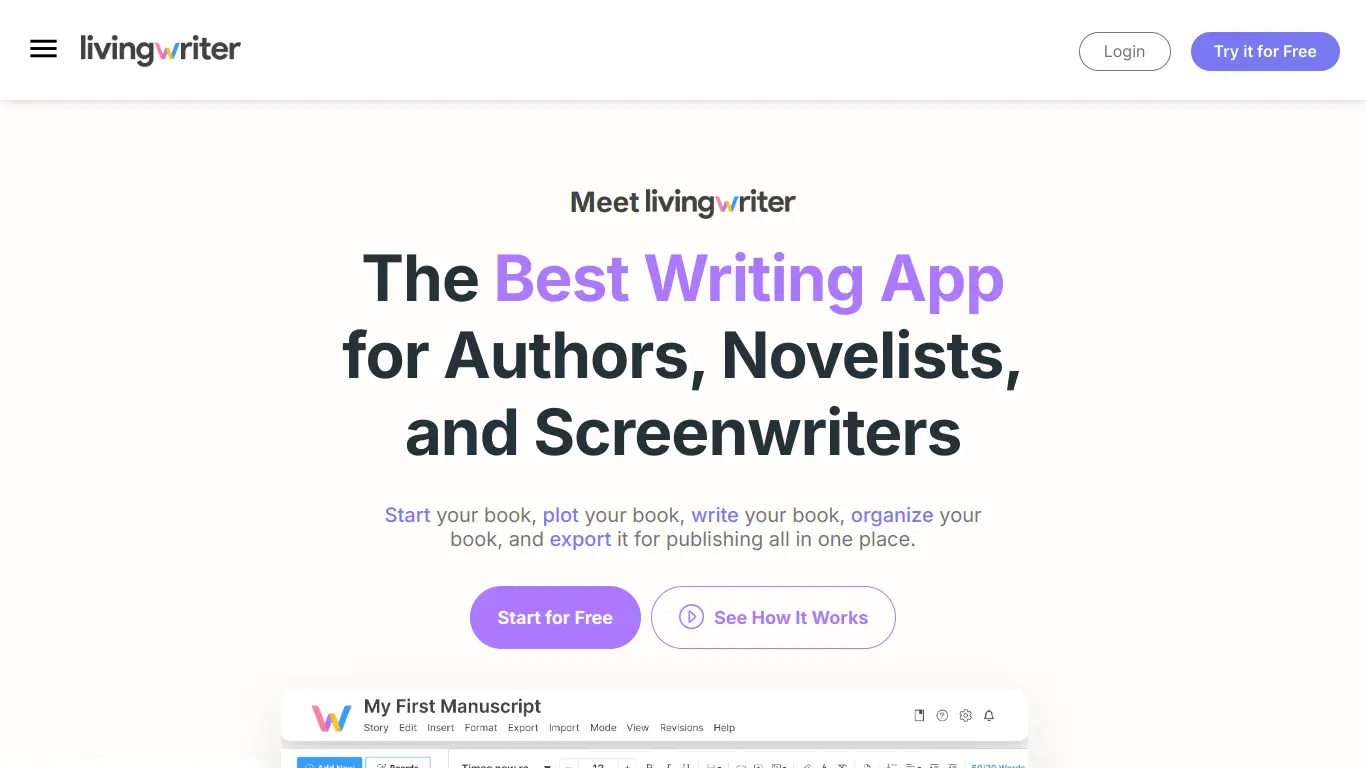
LivingWriter has emerged as the favorite for novelists who need powerful organization without Scrivener’s learning curve. Its 2025 version introduces AI-powered story structure assistance and expanded character development tools.
Key Features for Novel Planning:
- Story Structure Templates (Hero’s Journey, Save the Cat, etc.)
- Character development worksheets with psychological profile options
- Dynamic chapter and scene organization
- Goals and deadline tracking with writing analytics
- Smart text analysis for pacing and emotional arc visualization
- Cloud-based with offline capabilities
Pros:
- More intuitive than Scrivener with less learning required
- Modern, clean interface with excellent typography
- Strong focus on narrative structure and character development
- Excellent mobile apps with full feature parity
Cons:
- Subscription-based pricing model
- Fewer advanced formatting options than some competitors
- Relatively new company compared to established players
Ideal For: Fiction writers, novelists, and storytellers who want robust organization features with a gentler learning curve than Scrivener.
Pricing & Platform Availability:
- $9.99/month or $96/year ($8/month)
- Web-based with native apps for Windows, macOS, iOS, and Android
- 14-day free trial
6. Best Free Document Creation Software for Writers (Basic Needs): LibreOffice Writer
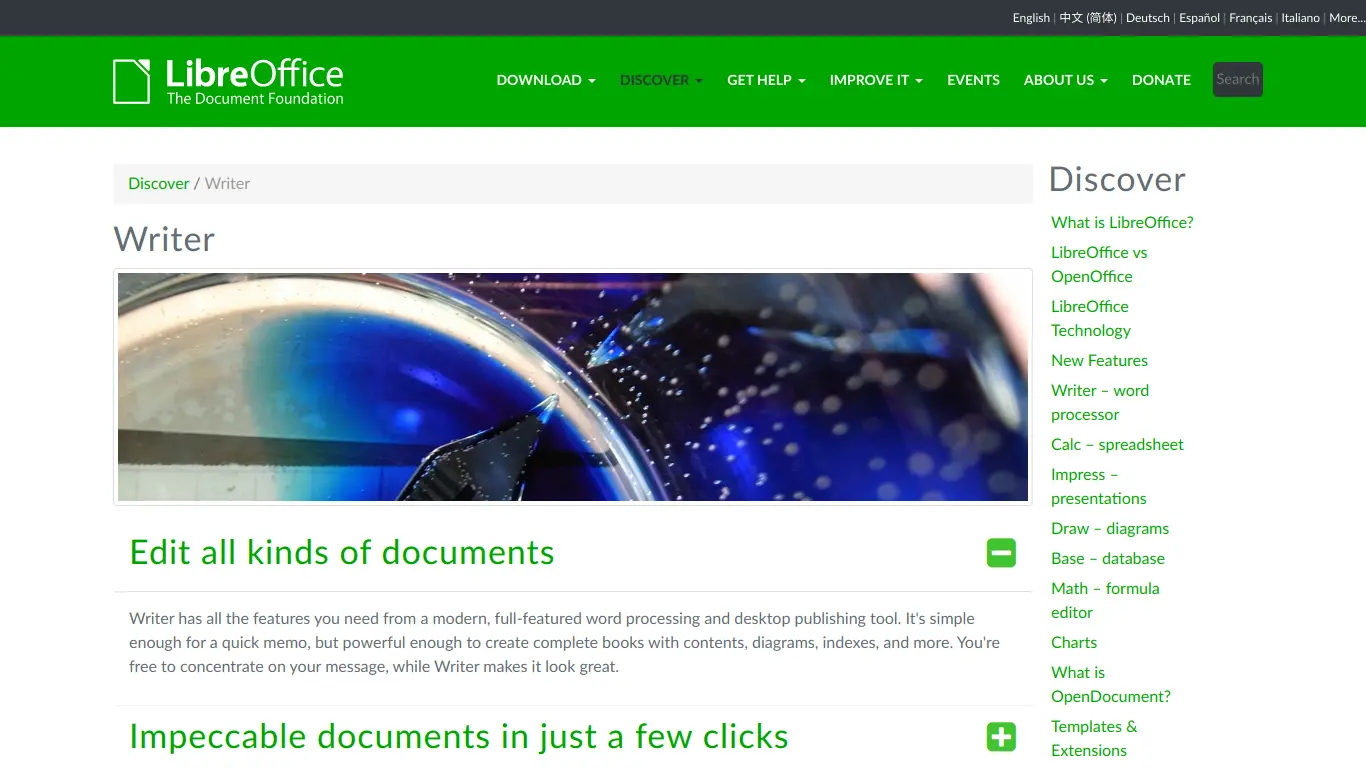
For writers on a tight budget, LibreOffice Writer delivers surprising power with zero cost. The 2025 version introduces a dedicated “Author Mode” with streamlined features for creative writers.
Key Free Features for Writers:
- Full-featured word processor with extensive formatting options
- Document navigation and organization tools
- Built-in bibliography database
- Extension support for added functionality
- New “Author Mode” interface (2025 feature)
- Export to EPUB for ebook creation
Pros:
- Completely free and open-source
- No subscription or hidden costs
- Offline operation with no account required
- Feature-rich compared to other free options
- Regular updates and community support
Cons:
- Less polished interface than commercial alternatives
- Lacks specialized tools for novel planning or screenwriting
- Fewer cloud integration options
- Occasional stability issues with very large documents
Ideal For: Budget-conscious writers, students, beginners, and those who need a solid word processor without specialized features.
Pricing & Platform Availability:
- 100% free
- Windows, macOS, Linux
- No trial period (always free)
7. Best Document Creation Software for Mac-Loving Writers: Ulysses
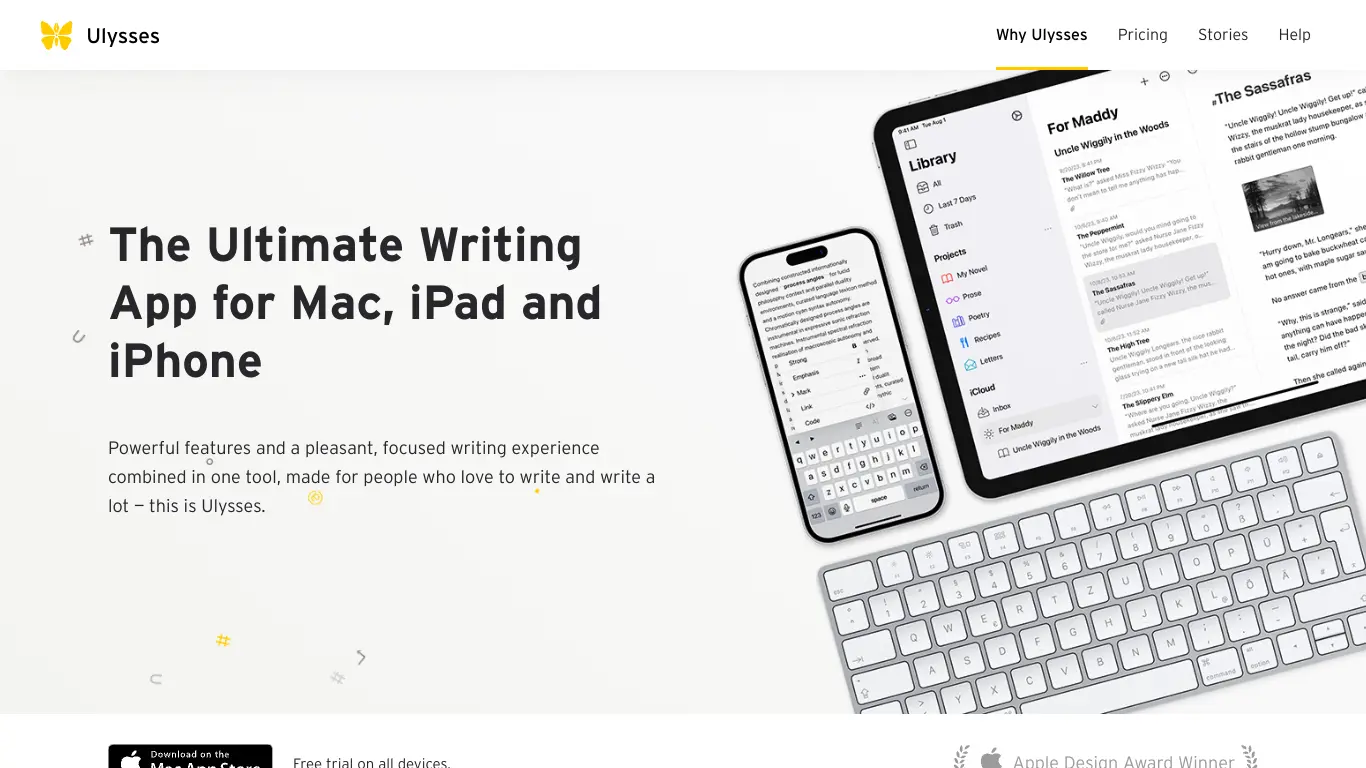
Ulysses embodies Apple’s design philosophy with a beautiful, seamless experience across Mac devices. The 2025 version introduces enhanced publishing options while maintaining its elegant simplicity.
Key Features & Mac Integration:
- Deep integration with macOS and iOS
- Beautiful distraction-free writing environment
- Powerful organization with groups and filters
- Direct publishing to WordPress, Medium, and Ghost
- iCloud synchronization across Apple devices
- Export to multiple formats including ePub, PDF, and DOCX
Pros:
- Gorgeous, distinctly Apple-like interface
- Excellent keyboard shortcut support
- Seamless transition between devices in Apple ecosystem
- Beautiful export styles and templates
Cons:
- Subscription pricing model
- Only available for Apple devices
- Uses modified Markdown that doesn’t always play well with other tools
- Limited collaboration features
Ideal For: Writers fully committed to the Apple ecosystem who value elegant design and seamless cross-device experience.
Pricing & Platform Availability:
- $5.99/month or $49.99/year
- macOS, iOS only
- 14-day free trial
8. Best Document Creation Software for Writers on a Budget: WPS Writer

WPS Writer offers surprising capability at a minimal cost, making it perfect for writers who need professional features without premium pricing. The 2025 version adds AI-powered writing assistance while maintaining its affordability.
Key Features & Affordability:
- Microsoft Word-compatible interface and file formats
- Cloud storage with free tier (1GB)
- Mobile editing on all devices
- Advanced document templates
- Built-in PDF conversion
- New AI writing assistant with basic capabilities
Pros:
- Extremely affordable premium tier
- Generous free version
- Familiar interface for Microsoft Office users
- Lightweight with fast performance
- Good mobile app experience
Cons:
- Ad-supported in free version
- Fewer specialized writing features than dedicated tools
- Limited collaboration compared to Google Docs
- Some features hidden behind premium tier
Ideal For: Budget-conscious writers, students, and those who want a familiar Word-like experience without the Microsoft price tag.
Pricing & Platform Availability:
- Free tier with basic features
- Premium: $29.99/year with all features
- Windows, macOS, Linux, Android, iOS
- Web-based version available
9. Best Document Creation Software for Writers Who Love Markdown: Typora

Typora offers a uniquely seamless Markdown experience, rendering formatting in real-time while you type. The 2025 version adds collaborative features while maintaining its clean, distraction-free environment.
Key Features for Markdown Writing:
- Live preview of Markdown as you type
- Support for tables, diagrams, math equations
- Document outline navigation
- Customizable themes and CSS
- File management system for organizing documents
- New: real-time collaboration through secure sharing links
Pros:
- Beautiful rendering of Markdown in real-time
- One-time purchase (not subscription)
- Fast performance even with large documents
- Excellent image handling within documents
- Clean, minimal interface
Cons:
- Less hand-holding for Markdown beginners
- Fewer organizational tools for very large projects
- Limited integration with publishing platforms
- Narrower focus than all-purpose writing tools
Ideal For: Bloggers, technical writers, academics, and anyone who prefers writing in Markdown syntax.
Pricing & Platform Availability:
- $14.99 one-time purchase
- Windows, macOS, Linux
- Free beta version still available for testing
10. “Hidden Gem” Document Creation Software for Writers (Unique Niche): Atticus

Atticus has evolved from a formatting tool to a comprehensive writing and publishing platform. The 2025 version positions it as the ultimate all-in-one solution for self-published authors.
Highlight Unique Features and Benefits:
- Combined writing environment and professional formatting tool
- Book cover design capabilities with templates
- Direct publishing to major platforms (Amazon, Barnes & Noble, etc.)
- Royalty tracking and sales analytics dashboard
- Collaborative editing with role-based permissions
- Marketing toolkit with email integration
Pros:
- Streamlines the entire self-publishing workflow
- Professional-quality formatting without technical knowledge
- Direct publishing saves time and reduces errors
- All-in-one solution eliminates need for multiple tools
Cons:
- Jack-of-all-trades approach means some features aren’t as deep
- Higher learning curve for utilizing all capabilities
- More expensive than single-purpose tools
- Primarily focused on book publishing rather than all writing types
Ideal For: Self-publishing authors who want to handle writing, formatting, publishing, and marketing in one platform.
Pricing & Platform Availability:
- $147/year or $247 lifetime purchase
- Windows, macOS, web-based
- 30-day money-back guarantee
11. Best Document Creation Software for Academic Writers: Manuscripts
Manuscripts addresses the specific needs of academic and research writers with specialized tools for citations, complex formatting, and collaboration. The 2025 version introduces enhanced AI assistance for literature reviews.
Key Features for Academic Writing:
- Integrated citation management and bibliography generation
- LaTeX equation editor with real-time preview
- Figure and table management with numbering
- Journal-specific formatting templates
- Version control and collaboration tools
- AI-powered literature review assistant
- Direct submission to academic journals and repositories
Pros:
- Specialized tools for academic requirements
- Handles complex formatting automatically
- Excellent reference management
- Collaborative features designed for research teams
Cons:
- Learning curve for utilizing advanced features
- Less suitable for creative writing projects
- Premium features require subscription
- Limited mobile functionality
Ideal For: Academic writers, researchers, students, and professionals who create research papers, dissertations, or scholarly articles.
Pricing & Platform Availability:
- Basic: Free with limited features
- Pro: $9.99/month or $99/year
- Team: $19.99/user/month
- Windows, macOS, limited web version
Comparison Table: Top Document Creation Software for Writers & Authors
| Software | Best For | Key Strength | Pricing | Platforms | Learning Curve |
|---|---|---|---|---|---|
| Scrivener 4.0 | Novelists & complex projects | Organization | $59.99 one-time | Windows, macOS, iOS, Android | High |
| iA Writer Pro | Distraction-free writing | Minimalism | $49.99 one-time | macOS, iOS, Windows, Android | Low |
| Google Docs Premium | Collaboration | Accessibility | Free/$9.99 mo | All (web-based) | Low |
| Final Draft 13 | Screenwriting | Industry standard | $249.99 one-time | Windows, macOS | Medium |
| LivingWriter | Novel organization | Story structure | $9.99/mo or $96/yr | All (web-based) | Medium |
| LibreOffice Writer | Budget writers | Cost (free) | Free | Windows, macOS, Linux | Medium |
| Ulysses | Mac users | Apple integration | $5.99/mo or $49.99/yr | macOS, iOS only | Low |
| WPS Writer | Budget-conscious | Value | Free/$29.99 yr | All platforms | Low |
| Typora | Markdown enthusiasts | Real-time preview | $14.99 one-time | Windows, macOS, Linux | Medium |
| Atticus | Self-publishers | All-in-one | $147/yr or $247 lifetime | Windows, macOS, web | High |
| Manuscripts | Academic writers | Citations & formatting | Free-$19.99/mo | Windows, macOS | Medium-High |
Choosing Your Ideal Document Creation Software: A Writer’s Guide
Step-by-Step Guide: Selecting the Best Writing Software for Authors
Finding your perfect writing tool requires a methodical approach. Follow these steps to narrow down the options:
1. Define Your Primary Writing Genre & Project Types
Start by identifying what you’ll be writing most often:
- Novels and fiction books
- Screenplays and scripts
- Academic papers
- Blog posts and articles
- Poetry or short stories
- Business documents
Different genres benefit from specialized features—screenwriting software won’t help much if you’re writing academic papers.
2. Prioritize Features Based on Your Writing Process
Consider how you typically work:
- Do you meticulously outline before writing?
- Are you a “pantser” who discovers the story while writing?
- Do you need robust research organization?
- Is formatting a major concern?
- Do you require collaboration features?
Rank these needs from essential to nice-to-have.
3. Consider Your Budget: Free vs. Paid Options & Value for Writers
Be realistic about what you can afford:
- Free options can be surprisingly capable (LibreOffice Writer, Google Docs)
- One-time purchases eliminate subscription fatigue
- Subscription models often provide continuous updates and cloud features
- Some premium software offers significant educational discounts
Remember: expensive doesn’t always mean better for your specific needs.
4. Evaluate Your Need for Collaboration & Sharing
If you work with others, consider:
- Real-time collaborative editing capabilities
- Comment and suggestion features
- Version history and tracking
- Sharing permissions and access control
- Compatibility with editors’ preferred formats
Solo writers may not need these features.
5. Think About Your Preferred Writing Environment & Device Compatibility
Your hardware and preferences matter:
- Mac-only users have options unavailable to Windows users
- Mobile writers need robust apps, not just web access
- Multiple device users benefit from seamless sync
- Consider screen size and interface preferences
The best software fits your existing workflow and devices.
6. Explore Free Trials & Demos Specifically for Writers
Almost every paid writing software offers a free trial:
- Create a test project similar to your actual writing
- Try the features most important to your process
- Evaluate performance on your actual devices
- Check how exporting works for your needs
Don’t commit until you’ve tested the software with your real workflow.
FAQs About Document Creation Software for Writers
What is Document Creation Software for Writers and Why is it Different?
Document creation software for writers goes beyond general word processors by including specialized features for creative writing, narrative organization, and publishing preparation. Unlike standard office software, writer-focused tools often include character development features, manuscript formatting, distraction-free interfaces, and genre-specific templates (like screenplay formatting).
These specialized tools are designed around the creative writing workflow rather than business documentation needs. They typically offer better organization for complex narratives, more writing-focused interfaces, and export options suitable for publishing requirements.
Can Best Writing Software for Authors Really Improve My Writing?
Good writing software won’t magically transform poor writing into brilliant prose, but it can significantly improve your writing process and output in several ways:
- Enhanced productivity through distraction-free environments and better organization
- Improved structure via outlining and visualization tools
- Greater consistency with character and setting databases
- Fewer technical errors through integrated editing tools
- Better finished products with professional formatting options
The right software removes technical barriers so you can focus on creativity rather than fighting with your tools. Many authors report finishing projects faster and with less friction when using appropriate software.
What are the Must-Have Features in Document Creation Tools for Writers?
While needs vary by genre, most writers benefit from these core features:
- Reliable autosave to prevent losing work
- Flexible organization for managing chapters or sections
- Word count tools for tracking progress and goals
- Search and replace for manuscript-wide revisions
- Multiple export formats for sharing and publishing
- Version history to track changes and revisions
- Cross-device synchronization for writing anywhere
Specialized writers may also require features like screenplay formatting, citation management, or collaborative editing depending on their specific needs.
Is Free Writing Software Sufficient for Professional Authors?
Free writing software can absolutely be sufficient for professional authors, depending on their specific needs. Many successful authors use free tools like Google Docs, LibreOffice Writer, or free tiers of subscription services.
The key factors to consider:
- Complexity of your projects (novels vs. short articles)
- Specific formatting needs (specialized genres may require paid tools)
- Collaboration requirements
- Publishing workflow integration
Free tools often lack advanced organizational features for complex narratives or specialized formatting for certain publishing requirements. However, many professional writers successfully use free tools, especially when combined with separate organizational systems.
How Can Document Creation Tools Help with Writer’s Block?
Modern writing software offers several features specifically designed to combat writer’s block:
- Distraction-free modes eliminate visual clutter and help maintain focus
- Prompt generators provide creative starting points when you’re stuck
- Goal tracking creates accountability and momentum
- Non-linear writing allows you to skip difficult sections and work on parts that flow more easily
- Progress visualization provides motivation by showing how far you’ve come
- Timer-based writing sprints encourage short bursts of productivity
The 2025 generation of writing software also includes AI-assisted brainstorming tools that can suggest plot developments, character actions, or dialogue options when you’re stuck.
What are the Best Document Creation Tools for Different Writing Genres?
Each genre has unique software requirements:
Fiction/Novels:
- Scrivener 4.0, LivingWriter, and Ulysses excel with character development, complex organization, and manuscript formatting
Screenwriting:
- Final Draft 13, Fade In, and WriterDuet offer industry-standard formatting and collaboration tools
Academic Writing:
- Manuscripts, Scrivener, and specialized tools like Zotero integration provide citation management and structured formatting
Blogging/Online Content:
- iA Writer, WordPress editors, and Typora offer clean Markdown writing with web publishing integration
Poetry:
- Minimalist tools like iA Writer and specialized poetry software like Versepad provide distraction-free environments with typography focus
The best choice depends on your specific workflow within these genres.
How Important is Distraction-Free Mode in Writing Software?
Distraction-free mode has become increasingly important as digital distractions multiply. Research shows that context switching can reduce productivity by up to 40%, and it takes an average of 23 minutes to fully regain focus after an interruption.
For many writers, especially those with focus challenges, distraction-free mode is essential rather than optional. Benefits include:
- Increased word count production
- Deeper creative flow states
- Reduced editing during drafting (improving overall efficiency)
- Lower mental fatigue from constant context switching
However, the importance varies by individual. Some writers work perfectly well in standard interfaces, while others find distraction-free modes transformative for their productivity.
Can Document Creation Software Help with Self-Publishing Formatting?
Absolutely. Modern document creation software has evolved to address the complex formatting requirements of self-publishing:
- Tools like Atticus, Vellum, and Scrivener offer one-click formatting for both ebook and print formats
- Templates ensure professional-looking results without design expertise
- Preview functions let you see how your book will look on different devices
- Direct export to publishing platforms eliminates technical conversion problems
- Consistent styling throughout lengthy manuscripts
Self-publishers previously needed to hire formatters or learn complex tools like InDesign, but today’s writing software makes professional formatting accessible to authors without technical expertise.
What are the Ethical Considerations of Using AI in Writer Document Creation Tools?
The integration of AI in writing tools raises several ethical considerations that writers should be aware of:
- Originality and authorship: When AI suggests content, where is the line between assistance and co-writing?
- Training data concerns: Many AI systems were trained on copyrighted works without explicit permission
- Stylistic homogenization: Over-reliance on AI suggestions could lead to less distinctive writing voices
- Privacy implications: Submitting your writing to AI systems means sharing your content with the provider
- Accessibility and fairness: Premium AI features create advantages for those who can afford them
In 2025, responsible writing software provides transparency about how AI suggestions are generated and gives writers full control over when and how AI assistance is used.
How to Migrate Existing Writing Projects to New Document Creation Software?
Changing writing software doesn’t have to mean starting over. Follow these steps for a smooth migration:
- Export your current work in a universal format (typically .docx or plain text)
- Create a backup of your original files before migration
- Import to your new software using its import functionality
- Check for formatting issues that may need manual correction
- Recreate any complex organization like chapter structure or character databases
- Test the workflow with a small writing session before fully committing
- Consider running both systems in parallel during a transition period
Most modern writing software includes import wizards specifically designed to ease migration from common alternatives. When possible, choose a time between projects for major software transitions.
Conclusion: Write On: Unleashing Your Authorial Potential with the Right Tools
Final Recommendations: Choosing the Best Document Creation Software to Fuel Your Writing Journey
After reviewing the top document creation tools for writers in 2025, several clear recommendations emerge:
For serious novelists and long-form writers: Scrivener 4.0 remains the gold standard with its unmatched organizational capabilities, though LivingWriter offers a more accessible alternative with a gentler learning curve.
For writers seeking beautiful simplicity: iA Writer Pro and Ulysses deliver distraction-free environments with thoughtful design that gets out of your way.
For collaborative teams: Google Docs Premium offers unmatched real-time collaboration, while specialized tools like WriterDuet excel for screenwriting teams.
For budget-conscious writers: LibreOffice Writer and WPS Writer provide capable environments without the price tag, proving great writing doesn’t require expensive software.
The perfect writing software is ultimately the one that fits your specific workflow, project types, and preferences. Don’t be afraid to experiment with several options before committing—most offer free trials specifically for this purpose.
Embrace the Power of Technology to Enhance Your Craft as a Writer
The right document creation software isn’t just about making writing easier—it’s about expanding what’s possible. Today’s tools help writers organize complex narratives, collaborate across distances, publish in multiple formats, and maintain creative momentum.
Technology should serve your creativity, not hinder it. When you find the right tool, it becomes nearly invisible—an extension of your creative process rather than an obstacle to overcome. The best writing software gives you more time and mental energy for what matters most: telling your story.
As writing technology continues to evolve, stay open to new tools that might better serve your changing needs. The perfect writing environment today might not be the same as the perfect environment tomorrow.
Call to Action: Share Your Go-To Document Creation Tools for Writers in the Comments!
What document creation tools have transformed your writing process? Are you loyal to one platform or do you use different tools for different projects? We’d love to hear about your experiences—both positive and challenging—with the software mentioned in this guide.
Have we missed any hidden gems you think deserve recognition? Share your recommendations and let us know which features matter most to you as a writer.
And if you’re looking for even more comprehensive information about the broader landscape of content creation tools beyond just writing software, don’t miss our expanded guide: Document Creation Tools: The Ultimate Guide to 2025’s Best Options.
Happy writing! ✍️






